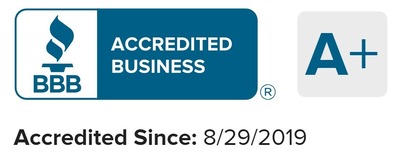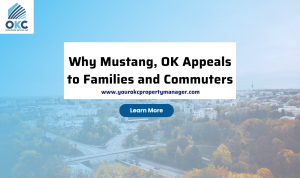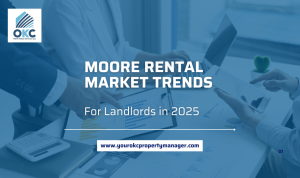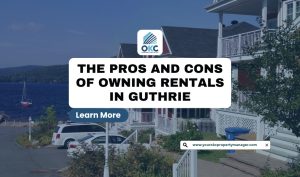Managing a rental property isn’t easy, even when you live in the same city as your tenants. But when you’re hundreds or even thousands of miles away, the challenges multiply. Distance adds new layers of stress, risk, and responsibility.
So, what exactly is a long-distance landlord?
It’s a property owner who rents out a house, apartment, or other real estate asset while living far from it. This situation is more common than many realize. You may find yourself in this position if:
- You relocated for work but kept your former home as a rental.
- You inherited property in another city or state.
- You invested in an out-of-state market for higher returns or diversification.
Whatever the reason, the reality is the same: you must manage your property without being physically present.
But with the right systems, technology, and local support, being a successful long-distance landlord is completely possible. From tenant screening to handling repairs, and from legal compliance to financial planning, there are proven strategies that minimize stress and maximize returns.
In this article, with over 15 years of experience managing rental properties in Oklahoma City and nearby metro areas, I’ve talked about a clear roadmap for turning long-distance landlording from a source of stress into a system that works smoothly.
Key Strategies For Long-Distance Landlord Success
Now that we’ve identified the challenges, here’s a comprehensive roadmap to overcoming them effectively. But to make remote landlording work, you need systems, technology, and people you can trust.
1. Hire a Reputable Local Property Management Company
A reliable property management company (PMC) can be your best partner, handling daily tasks, tenant communication, rent collection, and maintenance coordination for remote landlording.
Benefits of a property management company:
- Markets your rental and screens tenants
- Handles maintenance and emergency calls
- Collects rent and deposits funds directly to your account
- Enforces lease terms and manages evictions if necessary
- Provides financial reports for tax purposes
- Saves time and reduces stress
- Local Knowledge of market trends and compliance
- Faster issue resolution and tenant response
How to Vet a Property Management Company?
You do the following when vetting property managers:
- Check Credentials: Look for companies licensed and certified by associations like the National Association of Residential Property Managers (NARPM).
- Read Reviews and Ask for References: Seek feedback from current clients, preferably other remote landlords.
- Evaluate Services Offered: Does the PMC provide tenant screening, eviction services, financial reporting, and regular inspections?
- Transparency on Fees: Property management fees typically average between 8% to 12% of monthly rent. Watch for hidden costs like leasing fees or maintenance markups.
- Contract Review: Have a real estate attorney review property management agreements to clarify responsibilities, reporting frequency, and termination clauses.
- Process: Ask about their tenant screening process, maintenance vendor network, and communication style.
2. Leverage Technology for Remote Management
Technology empowers you to manage properties remotely with efficiency and transparency. Thanks to these online tools, modern property management is easy.
Essential tech tools for remote property management:
- Video Tours & Virtual Showings: Use smartphone cameras or hire professionals to create polished virtual tours, reducing vacancy times.Tip: Keep a list of vetted vendors with contact information, price estimates, and work guarantees. This ensures you have a backup if your property manager is unavailable or if you want a second opinion on repairs.
- Digital Rent Collection: Platforms like Cozy, Buildium, and AppFolio simplify online payments, automate late fee notices, and track finances in real-time.
- Maintenance Request Portals: Tenants submit repair requests via apps or websites; property managers or contractors respond with updates.
- Cloud-based Document Storage: Maintain digital leases, inspection reports, and financial records accessible from anywhere.
- Smart Home Devices: Consider installing smart locks and security cameras so tenants can be serviced without a physical key exchange; monitor property remotely.
According to a 2023 survey by Software Advice, 72% of landlords reported improved communication and tenant satisfaction after adopting digital rent collection and maintenance platforms.
3. Build A Reliable Local Network
Even if you have a property manager, it’s wise to have your own trusted local contacts. Having trusted local contacts is key to timely maintenance and inspections.
Your local network should include:
- Licensed Contractors and Tradespeople: Establish relationships with plumbers, electricians, HVAC technicians, and handymen. Get multiple bids to ensure fair pricing.
- Property Inspectors: Schedule regular formal inspections (every 3–6 months) to check property condition and compliance.
- Real Estate Agents: Work with rental agents for marketing vacancies and advising on local market rent rates.
- Licensed Attorney: A local attorney familiar with landlord-tenant laws helps you when disputes arise.
- Neighbors or Friends: Sometimes, informal arrangements help with quick checks or package deliveries.
Tip: Keep a list of vetted vendors with contact information, price estimates, and work guarantees. This ensures you have a backup if your property manager is unavailable or if you want a second opinion on repairs.
4. Set Clear Lease Terms and Screening Process
When you’re not nearby, clear expectations are even more important. So, a strong lease agreement and thorough tenant screening reduce problems you gonna face as a long-distance landlord.
Lease clauses to consider:
- Use standardized leases compliant with state and local landlord–tenant laws.
- Include clear property use rules, such as no subletting without written consent and no unauthorized occupants beyond those listed on the lease.
- Define inspection rights, stating that the landlord may inspect the property with proper legal notice as required by law.
- Detail tenant responsibilities, maintenance reporting protocols, and consequences for late payments or property damage.
- Specify communication methods (e.g., email, phone, online portal) and response times.
Tenant Screening Steps:
Your tenants become your eyes and ears. So, you need reliable, responsible renters.
Effective tenant screening includes:
- Require credit checks, employment verification, and references.
- Use background screening services; your property manager can assist.
- Interviewing applicants to gauge reliability
- Avoid discrimination and comply with Fair Housing laws.
TransUnion SmartMove reports that 84% of landlords believe tenant screening significantly reduces the risk of problematic tenants.
5. Conduct Regular Inspections and Property Visits
Even with reliable local networks, frequent direct property visits yield insights that digital tools miss. So, you must have a question: “How often should remote landlords visit?”
Inspection and Visit Frequency:
- Quarterly or bi-annual inspections and visits are ideal in most markets.
- For high-maintenance or older properties, consider more frequent checks.
Cost-Benefit Analysis:
- Balance travel expenses against risk reduction from early problem detection.
- Combine inspections with market visits or vacation trips to save costs.
- If travel costs are high, combine visits with personal trips or delegate inspections to your PMC.
When visiting, use a detailed checklist covering structural integrity, appliances, safety devices, and tenant upkeep.
Legal & Financial Considerations for Remote Landlords
Long-distance landlording introduces unique legal and financial challenges.
1. Landlord-Tenant Laws and Fair Housing Compliance
- Laws vary by state and locality; be aware of rent control, eviction processes, security deposit limits, and habitability requirements.
- Fair Housing Act enforcement is strict; ensure no discrimination in tenant selection or advertising.
Consider subscribing to legal update newsletters or consulting specialized attorneys annually.
2. Tax Implications
- Rental income is taxable regardless of the homeowner’s location.
- You may file federal and state taxes in multiple jurisdictions.
- Track deductible expenses carefully (property management fees, repairs, travel for inspections).
- Consult a CPA familiar with real estate investments and multi-state filings.
3. Insurance Needs
- Maintain landlord insurance covering property damage, liability, and loss of rent.
- Consider additional coverage for natural disasters or specific geographic risks.
- Inform your insurer of remote management to ensure proper underwriting.
Communication Best Practices: Maintaining Relationships Remotely
Strong landlord-tenant communication builds trust and minimizes conflicts.
Tips:
- Set expectations early on how and when you will respond.
- Use multiple communication channels: email, phone, text, and tenant portals.
- Provide emergency contact info for local property managers.
- Send periodic newsletters or updates about property improvements or community news.
- Address complaints promptly; follow up to confirm resolution.
Research by Zillow Rental Manager found that landlords who responded to tenant inquiries within 24 hours had 30% higher tenant satisfaction ratings.
Can You Successfully Manage a Rental Property From Another City or State?
Yes, you absolutely can. But the key is having the right systems and support in place. While local landlords benefit from face-to-face tenant interactions, quick maintenance response, and personal oversight, as a remote landlord, you must recreate that same reliability using trusted people, proven processes, and modern technology.
Many owners choose this long-distance landlording because:
Job relocation:
They’ve relocated for work but want to keep their rental. Out-of-state investing: They’re investing in higher-return markets outside their hometown.
Inherited property:
They’ve received a home through inheritance but don’t live nearby, so renting it out becomes a way to generate income and preserve the asset. They’re expanding a real estate portfolio nationwide.
The challenge? Distance creates communication gaps, slows down repairs, and makes it harder to build tenant rapport.
The opportunity? You can tap into better markets, diversify your portfolio, and rely on professionals and digital tools to manage everything, without being tied to one location.
According to a 2023 Roofstock investor report, over 30% of real estate investors own properties outside their home state, a number that’s steadily rising thanks to remote management technology.
Why Long-Distance Landlording Can Be More Profitable Than Local Ownership
Managing rentals from afar doesn’t have to be risky; it can actually be more profitable. When you set up the right processes, distance becomes a chance to grow, not a hurdle. With top-notch help on the ground, cutting-edge tech, and hands-on property care, you can get the most out of your rental income without being stuck in one area or postal code.
OKC Home Realty Services helps out-of-state investors succeed in Oklahoma City’s market. Our team takes care of it all, from finding tenants and fixing things to getting the rent, so you can reap the rewards of owning property far away without the headaches.
Want to grow your rental portfolio beyond your backyard? Get in touch with our property management specialists now and let us be your local partner in profitable property management.
FAQs on Becoming Out-of-State Landlord
Can you be a long-distance landlord?
Yes, many property owners successfully manage rentals from another city, state, or even country. The key is replacing your physical presence with trusted local help, clear systems, and the right technology.
How to manage out-of-state rental property?
Managing an out-of-state rental starts with hiring reliable local help. Most owners partner with a licensed property management company to handle tenant screening, rent collection, maintenance, and inspections. Use technology like online rent payment platforms, virtual tours, and maintenance portals to stay connected without being on-site. Build a local network of trusted contractors, inspectors, and legal professionals for emergencies. Finally, set clear lease terms, conduct regular inspections (quarterly or twice yearly), and stay compliant with the property’s state and local landlord-tenant laws.

Author
Scott Nachatilo is an investor, property manager and owner of OKC Home Realty Services – one of the best property management companies in Oklahoma City. His mission is to help landlords and real estate investors to manage their property in Oklahoma.
 (
(









